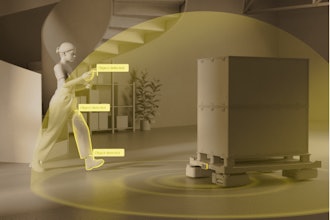
CNC machining, or computer numerical control machining, is a term commonly used in industrial and manufacturing applications. CNC machines employ computerized controls and machine tools to remove layers of materials to produce customized parts. Working with one of these machines can completely speed up your supply chain, whether you buy one or outsource.
How CNC Machines Change Manufacturing As We Know It
Traditional manufacturing supply chains are slowly becoming a thing of the past thanks to CNC machine technology. A company that manufactures machine parts needs to rely on its supply chain to extract and gather raw materials and transportation of said materials. Once a company has possession of what they need to create a product, they must then manufacture, distribute, and find a marketing firm to sell the product to an audience looking to buy.
It’s complicated, but that’s how supply chains operated for centuries. However, digital technology disrupts the industry and transforms dead or low parts of the supply chain into a more efficient process for both the digital manufacturing service and customers. Businesses can cut costs by using CNC machining and 3D printing technology.
Companies are starting to notice the drastic effects on production workflow, so much so that they’re willing to purchase multiple pre-owned CNC router machines to stay ahead of the curve. With CNC machines, businesses experience greater agility, efficiency, and reliability.
What Does the Research Say?
A massive study conducted by Transparency Market Research on CNC machining has found that the global CNC router market is going to expand significantly between 2019-2027.
CNC Routers Improve Productivity
CNC routers and machines can improve factory productivity because these machines create consistent, high-quality products. The demand for CNC routers is mainly determined by how flawless most parts look to the naked eye and how little companies have to fix or redesign parts that have been deemed useless. More products will be created as a result.
There is a reduced frequency of waste, error, and time it takes to finish a product. 3D printing software is already so sophisticated that even the cheapest models stay consistent.
Increased Demand for Wood Consumption Drives CNC Sales
More homeowners and businesses are seeking more woodworking applications than ever before, likely because woodworking used to be a niche job title. Buying hand-made wood furniture came at a high price, but CNC technology lowers the cost of labor and materials. Increased extraction of wood in construction applications will also fuel this growth.
Although metalworking will still be needed, woodworking is the leading cause for businesses shifting to CNC machines and throwing out their older, standard metal shearing machines.
Computer Controlled Devices Require Less Labor
Although jobs will be slashed across the board, plenty of engineering and general labor positions will be necessary to fill computer-based roles. Computer-controlled devices, however, require less labor in general. A CNC router technician will become a sought-after job title in the future, but these qualifications won’t be challenging to learn or teach.
Unfortunately, that’s a catch-22 for the industry in its infancy. Since operating a CNC machine is still niche, training can be expensive or hard to come by. That may change in the next decade.
Asia Pacific Will See the Most Growth
Asia Pacific will see the biggest growth and maximum demand for CNC technology in the next decade. This is due to high production demands from Japan, India, and China for automotive and industrial parts. The Asia Pacific also wants to expand the automotive industry in their region. CNC routers and machines will help forge the way for the Asia Pacific automotive industry.
Europe will also want to take a massive chunk of this market. As they are still an automotive industry hub, they will likely use this technology for the same purpose as the Asia Pacific.
The 4 Positive Impacts of CNC Machining on Supply Chains
The research is clear: CNC machining will play a massive role in the manufacturing business over the next decade. There are a few reasons why companies are quick to take advantage of this technology, despite it being under-utilized at the moment.
1. Lower Costs
Switching over from a manual supply chain to a more technologically focused one will come with a heavy cost upfront, but that is a small price to pay for less future spending. Even smaller businesses can see smaller overheads when they switch to both 3D Printing and CNC routers because they can be leveraged to produce lower-cost tools needed for prototyping.
Some businesses will be able to manufacture parts in smaller quantities on-demand with a CNC machine because they can manufacture them in-house immediately.
2. High-Quality Products
Creating a part by hand is tricky because all parts are susceptible to human error. Traditional machining can produce different results due to manufacturing errors, but CNC machines don’t have this problem. CNC machines are reliable because they use computer-controlled algorithms that create the same product in the same, exact way every single time. Errors only occur if the person putting in the algorithm makes a misstep or moves the equipment.
CNC machines have a built-in inspecting technology that guarantees the components are to the customers' standards. The machine would notify the business if an error was made.
3. Faster Turn-Around Times
The most significant advantage to using a CNC machine or 3D Printing is how quickly and effortlessly they perform on a tight schedule. The vast majority of the process is automated from a computer, making them run efficiently, consistently, and at lightning-fast speeds. If your customer needs a part manufactured in a day, it’s possible to do this. Now, you just have to ensure the parts make it to your customer quickly, but unfortunately, you can’t control the mail.
To keep turn-around times low, stay on schedule by producing the most intricate components first and the simpler ones last. Now both components will arrive on time.
4. Traceability
Digital supply chains are traceable, whereas manual or traditional supply chains lack that function. If the supply chain does have some way to track a package, you still have to rely on a third-party company to keep their end of the bargain. Digital manufacturing solutions enable companies to easily track and monitor the entire production process from beginning to end.
If your customer needs information about their initial quote or wants to see how long their package will take, a CNC machining company can do just that.























